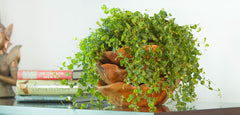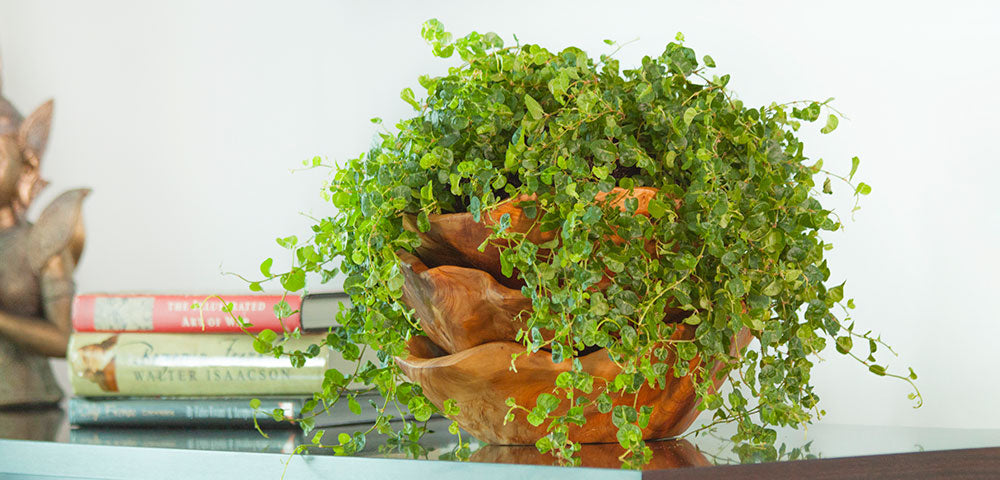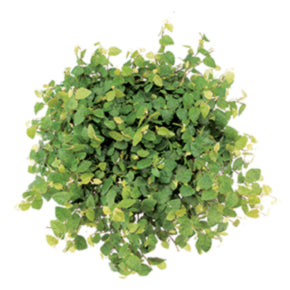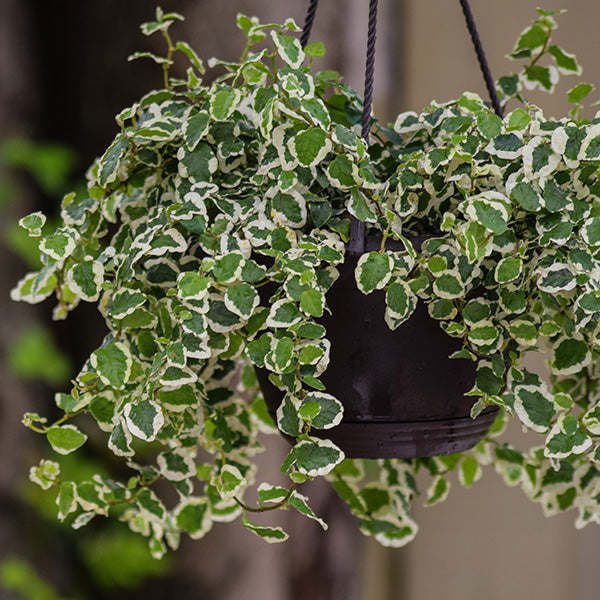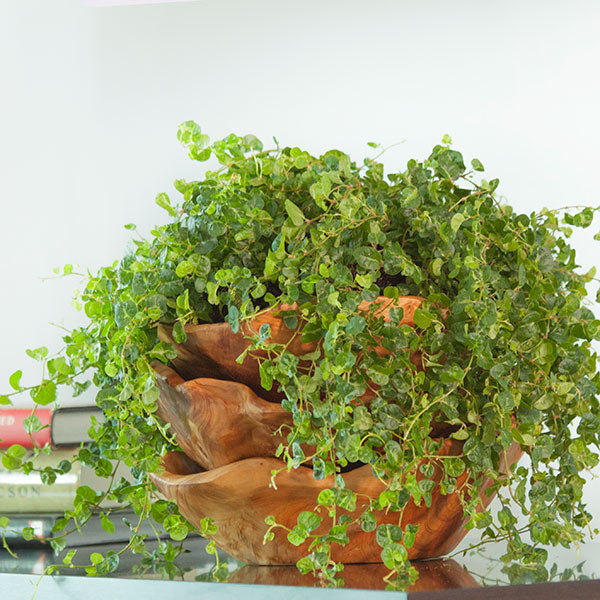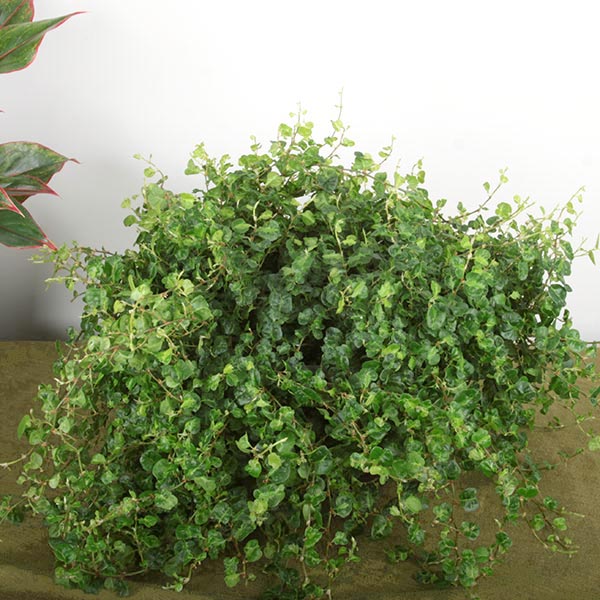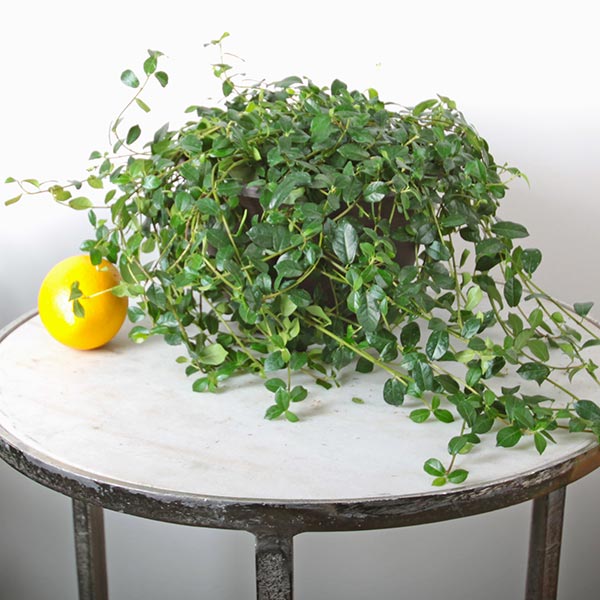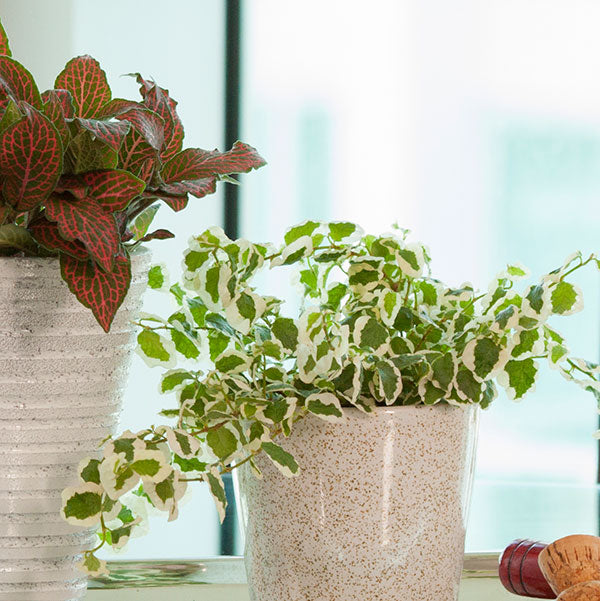Creeping Fig (Ficus pumila)
Creeping Fig Plant Features
Creeping fig is a delightful little houseplant. It’s also one of the smallest members of the ficus family. The plant is a close cousin to fiddle leaf fig (Ficus lyarata), weeping fig (Ficus benjamina), and even the edible fig (Ficus carica). Unlike much of its family, which grows as upright trees and shrubs, this little plant is a groundcover or vine, depending on how you grow it.There are a number of creeping fig varieties available (see them below at the bottom of the page), including types with extra-textured or variegated foliage. No matter which creeping fig variety you grow, it makes an excellent choice for indoor hanging baskets.
Creeping fig is also one of the best plants for topiary. It takes well to growing on a moss form, allowing you to easily add a touch of whimsey to your indoor spaces. It’s also an excellent choice for terrariums, where it thrives in moist, humid conditions.
Note: You may also see this plant sold as Ficus repens.
Questions about Creeping Ficus?
Just drop us an email and one of our indoor plant experts will get back to you!
Creeping Fig Growing Instructions
No matter which creeping fig variety you grow, the right care is important to keep it looking lush, happy, and healthy. It grows best in a spot with medium to bright light -- enough light that it casts a shadow much of the day. Both natural and artificial light are fine. Creeping fig doesn’t mind the light source, as long as it gets enough.Water creeping fig as the top inch or so of the potting mix dries to the touch. As a houseplant, it doesn’t tolerate drying out as well as other figs (including fiddle leaf fig). When it gets too dry, creeping fig will drop its leaves prematurely.
Hailing from warm, tropical climates, creeping fig appreciates average to above-average relative humidity levels. If the air is too dry, its leaves can go brown and crispy around the edges.
Avoid growing creeping fig in drafty areas, too. If it’s exposed to airflow that’s considerably warmer or cooler than the ambient air, the leaves could go yellow or brown and drop off. This includes drafts that may come in from exterior doors or windows, as well as the air from heating or cooling vents.
You typically don’t need to worry about pruning creeping fig, but you can prune or pinch it back at any time of the year without worrying about harming your plant.
Fertilize for faster growth. You can use a water-soluble fertilizer in spring and summer (don’t exceed recommendation instructions on the product packaging) or by using a time-release granular fertilizer once a year in spring. This type of product slowly releases nutrients to the plant every day for months. Use a fertilizer formulated for use on indoor plants.
Creeping fig is somewhat tolerant of being rootbound, but it grows best when it’s repotted as the roots fill the pot.
Get tips for repotting!
Note: This houseplant is not intended for human or animal consumption. It does produce a milky sap that can cause skin irritation if you have sensitive skin.
-
Water
Medium water needs
-
Light
Indoors: High light
Indoors: Medium light
-
Colors
Green
Variegated
-
Special Features
Purifies the air
Complement your Creeping Fig
DracaenaGive tree-like dracaena varieties a colorful, textural skirt by planting creeping fig at the base and let it elegantly trail down over the sides of the pot.
Nerve Plant
Add a splash of color to your creeping fig with the beautifully red-, pink-, or white-variegated foliage of nerve plant.
Purple Waffle Plant
Purple waffle plant thrives in the same kind of warm, humid conditions as creeping fig. They're ideal together in a terrarium!
